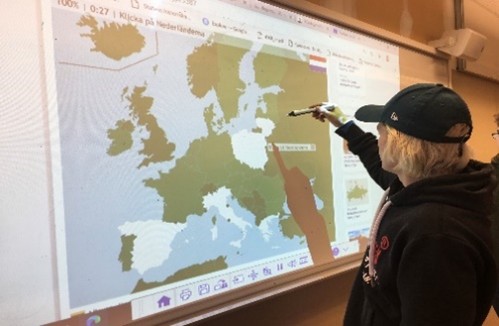
Teachers taking the next step: From eTwinning to Erasmus+

In 2006, Anna discovered that eTwinning could connect her classroom with the wider world. As a teacher working in vocational training programmes (students aged 16-18 years) at SG Södra Viken in Sunne, Sweden, her focus was on improving the transport study programme of her school. She wanted her students to interact with other vocational students across Europe and develop a sense of their European citizenship.
Finding a partner from a vocational school was her first challenge. However, in 2010, she finally received a message from an English teacher at the Sint-Lodewijk school (now Atlas College) in Genk, Belgium.
This marked the beginning of a long-lasting collaboration.
The teachers shared a common goal: to help students master English, broaden their horizons, experience intercultural interactions and exchange knowledge—all without leaving the classroom.
To achieve this, they created several projects together that enabled students to collaborate across Europe.
The first project, ‘EU Transport’, focused on the role of transport in the European context. This involved students sharing PowerPoint presentations with the few classroom computers available at the time. A few years later, the two teachers embarked on a longer project, ‘A trucker’s life’, which involved a third partner from a French vocational school. The project focused on the skills and experience needed to become a truck driver, with students analysing the regulations specific to their countries. One of the many activities required students to create a Europass CV, which helped them strengthen their European citizenship awareness.
One year later, they started a smaller project, ‘Don’t drive just talk’, which focused on transportation jobs and the existing European regulations in this area. The collaboration continued even during the Covid-19 pandemic. During that phase, the ‘Truckers well informed’ project expanded the topics and encouraged students to think about tackling disinformation and ensuring online safety. This was particularly important considering the fake news circulating about Covid-19 and transportation-related issues at the time. The Swedish and Belgian schools worked in parallel, and students interacted through Kahoot quizzes and video meetings.
Ten years from the start, Anna finally met her partners in person thanks to the support of the Swedish national Erasmus+ agency. Soon, teachers and students from the three countries were visiting each other’s schools and participating in a job-shadowing programme.
These former eTwinning collaborations had evolved into an Erasmus+ collaboration.
Anna reflects, ‘Thanks to eTwinning, we have built up a friendship as colleagues, which means that we feel trust and support in the work with internationalisation at our respective schools.’
Additional information
-
Education type:Early Childhood Education and CareSchool EducationVocational Education and Training
-
Target audience:TeacherStudent TeacherHead Teacher / PrincipalTeacher Educator
-
Target audience ISCED:Early childhood education (ISCED 0)Primary education (ISCED 1)Lower secondary education (ISCED 2)Upper secondary education (ISCED 3)

